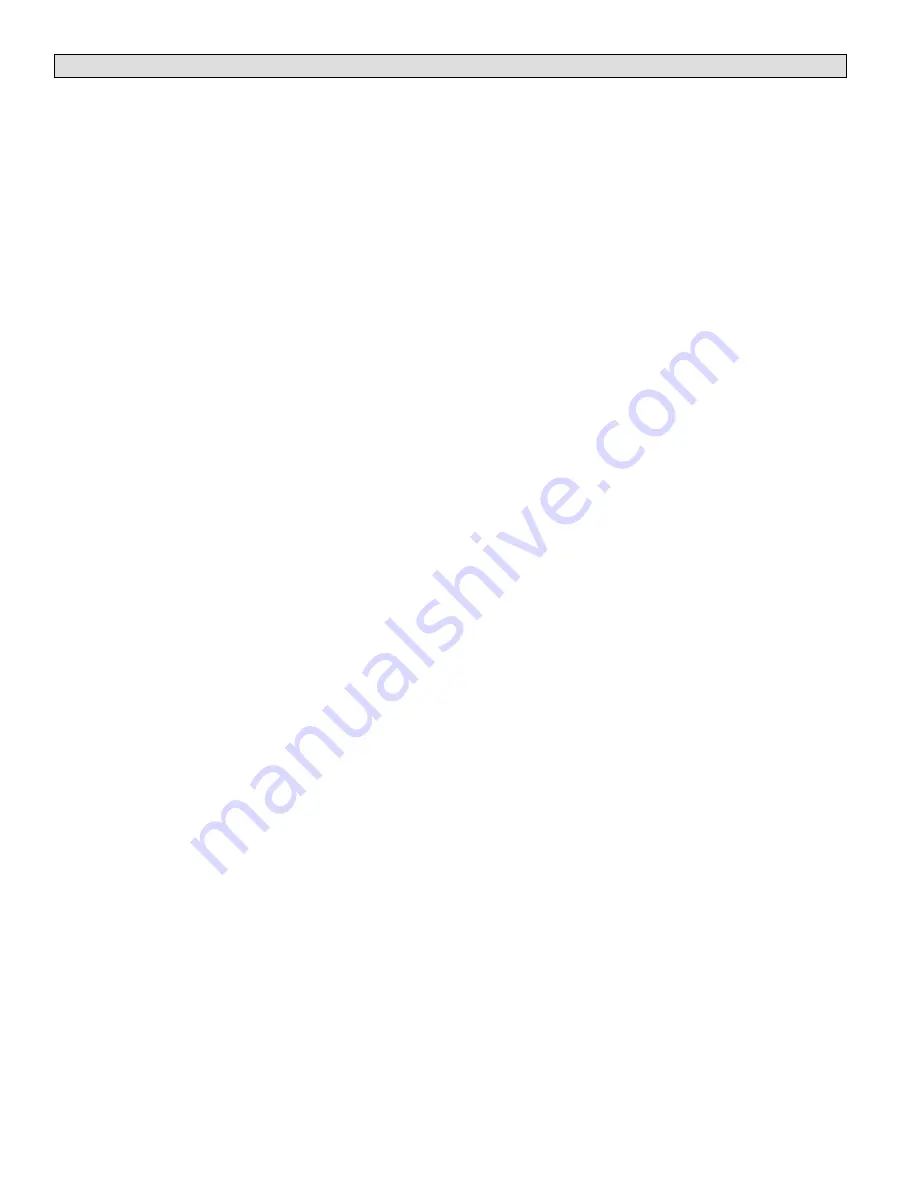
Page 8
12/12
Controlling the HRV/ERV
Today’s modern, air tight homes require fresh outdoor air
to maintain a healthy indoor air environment. The amount
of ventilation required in a home depends upon:
S
the number of occupants and their activity levels.
S
the way the home was built,
S
personal preferences for fresh air.
The HRV/ERV introduces fresh air to your home while re-
covering energy from the air it exhausts. Specifically, an
HRV/ERV that is properly installed, operated, and main-
tained will:
S
exhaust stale, contaminated air,
S
recover the majority of the energy from the exhausted
stale air,
S
use the recovered energy to preheat or precool out-
side air that is drawn into the house,
S
distribute the fresh air throughout the house.
How much ventilation is needed?
During seasons when windows and doors are closed (win-
ter and summer, if air conditioned) the HRV/ERV should be
set to operate continuously on low speed with the option of
going to high speed as the need arises. For example, if a
large number of people are present in the home, the unit
should be switched temporarily to high speed. Conversely,
when the home is unoccupied, an intermittent operational
mode (e.g. 20 minutes on / 40 minutes off) may be used.
Electronics
All units include a Wall Control. Optional controls can be
installed at the time of the installation or at a later date, pro-
viding a number of choices for upgrading the basic fea-
tures of the ventilation system.
Dehumidistat Operation
Often, well insulated and air tight homes will have high in-
door humidity levels during the heating season. High hu-
midity levels are apparent from the visible condensation on
windows. The amount of condensation on the windows will
increase as outdoor temperatures drop.
The HRV/ERV will reduce indoor humidity levels when out-
door air is drier than indoor air. This usually occurs during
the heating season when outdoor temperatures are less
than 59ºF (15ºC).
HRV controls include a dehumidistat function which can be
set to achieve a dehumidification effect from the HRV dur-
ing the winter heating season. High-speed ventilation will
be initiated upon exceeding the dehumidistat set point.
Once the humidity in the house is reduced, the HRV will re-
vert back to its previous setting.
It is recommended that the unit be operated for the first few
days without use of the dehumidistat function to observe if
a further dehumidification effect will be required. The dehu-
midistat operates in % of RH (relative humidity) with 80 be-
ing high and 20 being low. Set the Dehumidistat to 80% RH
to disable. If, after a few days, further dehumidification is
required (the house is too humid), set the humidity level to
a lower setting. Comfortable humidity levels range be-
tween 30 and 50% RH, depending on personal preference.
The dehumidistat should be off for all seasons except the
heating season (set to 80% RH).
Synchronizing the Humidity Setting
The optional wall controls (Y2171 and Y2172) have a fea-
ture that allows the controls to be synchronized with other
humidity instruments in the home. To synchronize:
1. Turn off the control with the ON/OFF button.
2. Simultaneously press and release the ON/OFF button
and the 20/40/60 minute high−speed override button.
3. Use the Up/Down arrow buttons to adjust the Humidity
Indicator on the display screen to the number of de-
grees difference between your humidity measuring
device. Minus is indicated by flashing.
4. Press the MODE button.
Dehumidistat Disable Feature
The new auto dehumidistat function prevents unwanted
use of the dehumidistat when outdoor temperature ex-
ceeds 59ºF (15ºC).
The dehumidistat function will be disabled if the outdoor
temperature exceeds 59ºF (15ºC) for a 24−hour period.
The dehumidistat function will be re-enabled if the unit is
unplugged for 3 minutes or if the outdoor temperature
drops below 59ºF (15ºC) for a 24-hour period. The dehumi-
distat disable feature is permanently enabled in the ERV
unit.























